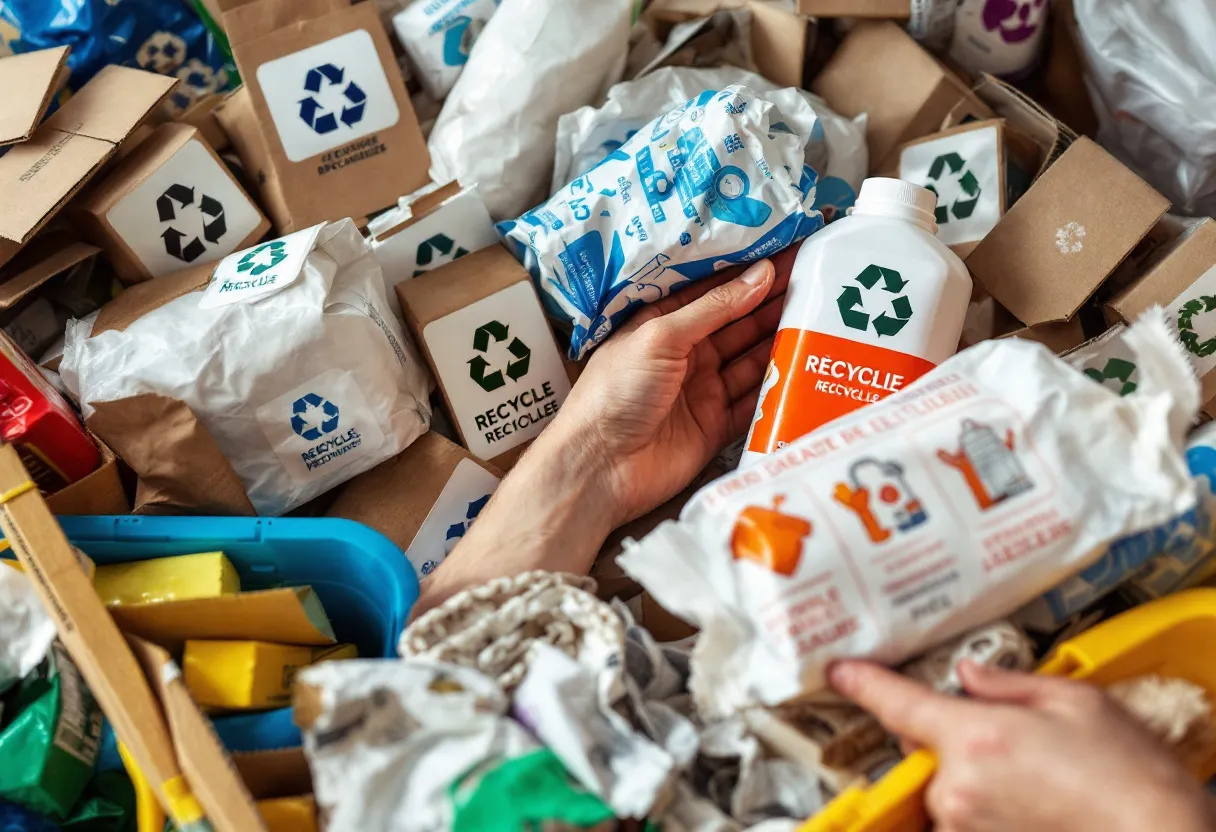Bonjour, mes amis! Lise Dubois here, and as someone who’s spent a good chunk of her life knee-deep in waste management – both at the CNRS and with local Lyon municipalities – I know a thing or two about what happens *after* we toss something in the bin. And let me tell you, navigating the world of French recycling symbols, or “le tri,” can feel like deciphering ancient hieroglyphs. But fear not! It’s not as daunting as it seems. Let’s break it down, shall we?
The Triman Logo: Your Sorting Compass
First and foremost, you’ll want to familiarize yourself with the Triman logo. It’s that little figure with arms outstretched, surrounded by arrows. Since 2015, this symbol has been mandatory on most recyclable products sold in France. What does it mean? Simply put, it tells you that the packaging is recyclable and needs to be sorted for separate collection. It’s a signal to do your part, to actively participate in the recycling process. Think of it as a little nudge from the government, reminding us to be responsible citizens of the planet.
Now, here’s the thing. The Triman *should* always be accompanied by “Info-tri,” which is essentially a set of instructions on how to properly sort the packaging. Look for these instructions – they often appear as text or pictograms indicating which bin (the “bac de tri”) each component should go into. If you don’t see the Info-tri, don’t panic! A quick search online, using the product name and “Info-tri,” will usually yield the information you need. It’s like a little treasure hunt for environmental responsibility!
The Mobius Loop: A Universal Sign
You’ve probably seen this one before – the triangular loop of arrows. This is the Mobius loop, a universal symbol indicating that a product is *capable* of being recycled. However, and this is a crucial point, it doesn’t necessarily mean that the product *will* be recycled in your area. It simply means that the material *can* be processed. Whether it actually is depends on local recycling infrastructure and policies. So, seeing the Mobius loop is a good start, but it’s not a guarantee.
Decoding the Numbers and Letters
Okay, this is where it can get a little… nerdy. But bear with me! Often, within the Mobius loop, you’ll find a number and/or letters. These indicate the type of material the packaging is made from. For plastics, for example, you might see a “1” inside the loop, indicating PET (polyethylene terephthalate), commonly used for bottles. A “2” signifies HDPE (high-density polyethylene), often found in milk jugs. Different numbers represent different types of plastics, each with its own recycling characteristics.
For paper and cardboard, you might see “PAP” followed by a number. “PAP 20” indicates corrugated cardboard, while “PAP 21” signifies non-corrugated cardboard. These codes help recycling facilities sort materials efficiently, ensuring that they end up in the right processing stream. Knowing these codes isn’t essential, but it can be helpful if you’re particularly keen on understanding the nuances of recycling.
Beyond the Symbols: Common Sense and Local Rules
Ultimately, successful recycling relies on a combination of understanding the symbols *and* using common sense. Here in Lyon, we have specific guidelines about what can and cannot be recycled in our yellow bins. For example, while some plastics are widely accepted, others, like certain types of films or polystyrene, are not. Your local municipality’s website is your best friend here. They’ll have detailed information about what’s accepted in your area.
And a quick word on contamination: make sure your recyclables are clean and dry. Food residue, liquids – these can all contaminate an entire batch of recycling, rendering it unusable. Give your containers a quick rinse before tossing them in the bin. It’s a small effort that makes a big difference.
Let’s Talk Green Dot
And what to do with packaging that has a green dot? Well, the Green Dot symbol (a circle with two arrows intertwined) doesn’t necessarily mean that the packaging is recyclable. What it *does* mean is that the manufacturer has financially contributed to a recycling organization.
It’s a reminder that recycling is a shared responsibility – not just for consumers, but for producers as well.
And what about the crossed-out wheelie bin symbol? This indicates that the product should not be disposed of in household waste but should be taken to a designated collection point for proper disposal or recycling. This is often found on electronic devices or batteries.
A Call to Action
So, there you have it – a crash course in French recycling symbols. It might seem a little complicated at first, but with a bit of practice, it becomes second nature. Remember, “le tri” is more than just a set of rules; it’s a commitment to a more sustainable future. Every bottle, every box, every yogurt pot – it all adds up. And by taking the time to sort our waste properly, we’re doing our part to protect our planet for generations to come. Let’s get sorting!
